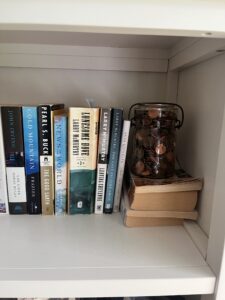 You never can tell what a reader will take away from a newspaper column.
You never can tell what a reader will take away from a newspaper column.
Last week, I wove a story about a man I met on an online dating site with news about the U.S. Treasury Department discontinuing production of the penny. Few folks commented about my would-be boyfriend, but everybody I encountered had a penny story or two to share.
I heard stories about using pennies to teach math to little kids. Stories about penny loafers. Stories about learning probability by flipping a penny over and over and recording heads or tails. Stories about penny-stacking contests. Stories about pennies in fuse boxes. Stories about potty-training toddlers using shiny pennies as a reward. Stories about penny poker. Stories about flattening pennies on train tracks and about souvenirs made from flattened pennies. Stories about rolling pennies into paper tubes to take to the bank. Stories about tossing pennies into a wishing well.
But my favorite penny stories involve collecting them. Not collecting rare and valuable pennies—I wrote about that in last week’s column—but saving pennies in cans and bottles and jars and jugs for other reasons.
I do that. I have a cool vintage glass jar that has a rusty metal handle and says ATLAS E-Z SEAL in raised letters on the front. I filled it with pennies and use it as a bookend. I have a dented peanut can with some pennies in it that serves as a paperweight if I’m trying to read the newspaper outside while the wind is blowing. And I have a little bitty glass baby food jar filled with pennies minted before 1963, when they were mostly copper, just because I like them.
But the way my sister and her family save pennies is a whole different story.
Full disclosure: they save not just pennies but all denominations of coins except half dollar and dollars. (Though the U.S. Mint still produces those coins, they’re primarily aimed at collectors and are rarely found in circulation.) Her family saves the coins in huge glass jugs purchased at flea markets and yard sales and antique stores.
My sister’s name is Mandy but I won’t tell her last name or where she lives. Here’s why. Once, many years ago, they kept a five-gallon glass jug on a stairway landing. Mandy emptied coins from her purse into that jug every day. Her husband emptied coins from his pocket into it every day. Sometimes, their children added coins they’d found under sofa cushions or in the car.
One afternoon, Mandy arrived home from work to find the front door of their house kicked in. No TVs had been stolen. No cameras. No guns. No jewelry. It’s easy to guess what was missing, right? The jug of coins, which was about halfway full, was gone. Mandy suspects that the two men who’d been painting her porch and who had a clear sight line from the windows to the staircase were the thieves, though she has no way of proving it. I don’t want that to happen to her again.
So just how much money in pocket change did the bad guys get away with? Several hundred dollars. “And they must have been super-strong,” Mandy told me. “Because that jug was HEAVY.”
But she and her family didn’t give up their coin-saving ways. Like me, Mandy remembers our mother saying, “A penny saved is a penny earned.” She believes dropping pocket change into a jug is a fun and painless way to save money. She and her husband recently acquired a fifteen-gallon jug, almost too heavy to lift even when empty. Slowly but surely, they’re filling it up. And it’s hidden in a spot where prying eyes can’t see it.
Mandy’s not sure what they’ll do with the all the quarters, dimes, nickels and—yes, pennies!– that jug will hold. But she’s sure it will be something wonderful.
(June 7, 2025)